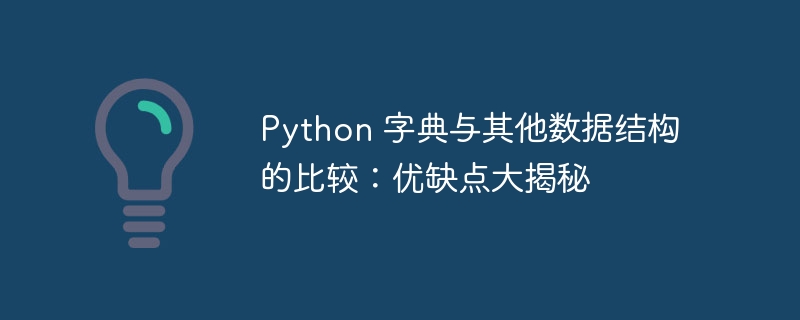

pythonA dictionary is a very powerfuldata structurethat allows users to store key-value pairs and quickly access them by key value. This makes dictionaries ideal for storing and retrieving data, especially when the data is unordered or when a specific element needs to be found quickly.
Compared with other data structures, dictionaries have the following advantages:
However, dictionaries also have some disadvantages:
In order to better understand the advantages and disadvantages of dictionaries and other data structures, we can compare them through some demonstration codes:
# 字典 my_dict = {"name": "John Doe", "age": 30, "city": "New York"} # 列表 my_list = ["John Doe", 30, "New York"] # 元组 my_tuple = ("John Doe", 30, "New York") # 集合 my_set = {"John Doe", 30, "New York"} # 查找元素 print(my_dict["name"])# 输出:John Doe print(my_list[0])# 输出:John Doe print(my_tuple[0])# 输出:John Doe print(my_set[0])# 输出:John Doe# 集合中的元素是无序的,因此无法保证元素的顺序 # 添加元素 my_dict["job"] = "Software Engineer" my_list.append("Software Engineer")# 列表可以添加元素 my_tuple = my_tuple + ("Software Engineer",)# 元组不能直接添加元素,需要重新创建 my_set.add("Software Engineer")# 集合可以添加元素 # 删除元素 del my_dict["job"] my_list.pop()# 列表可以删除元素 del my_tuple[-1]# 元组不能直接删除元素,需要重新创建 my_set.remove("Software Engineer")# 集合可以删除元素
Through these demonstration codes, we can see that dictionaries have advantages in finding and accessing elements, while lists and tuples have advantages in orderliness, and sets have advantages in storing unordered data. In practical applications, we can choose the most appropriate data structure according to the needs ofproject.
The above is the detailed content of Python dictionary compared to other data structures: advantages and disadvantages revealed. For more information, please follow other related articles on the PHP Chinese website!




